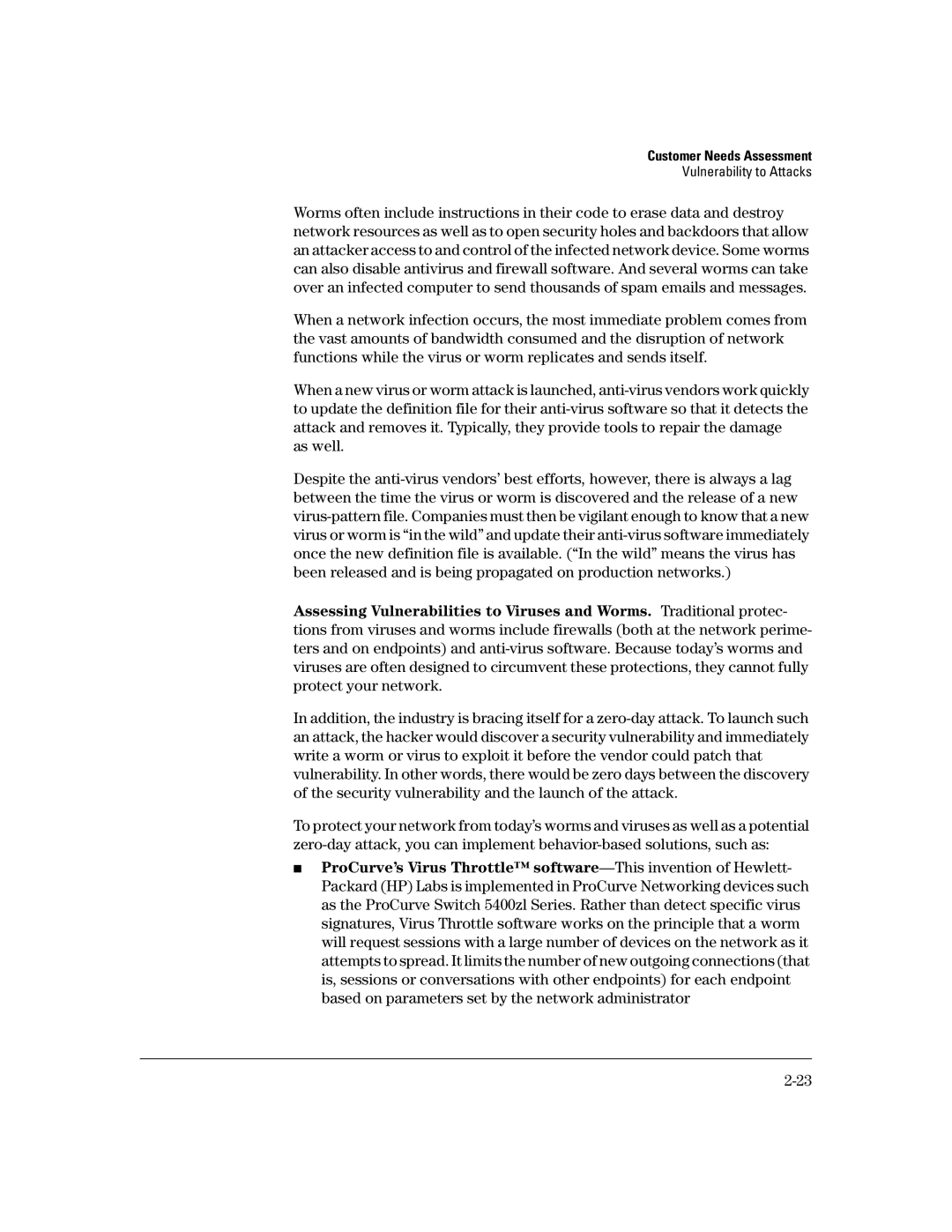Customer Needs Assessment
Vulnerability to Attacks
Worms often include instructions in their code to erase data and destroy network resources as well as to open security holes and backdoors that allow an attacker access to and control of the infected network device. Some worms can also disable antivirus and firewall software. And several worms can take over an infected computer to send thousands of spam emails and messages.
When a network infection occurs, the most immediate problem comes from the vast amounts of bandwidth consumed and the disruption of network functions while the virus or worm replicates and sends itself.
When a new virus or worm attack is launched,
Despite the
Assessing Vulnerabilities to Viruses and Worms. Traditional protec- tions from viruses and worms include firewalls (both at the network perime- ters and on endpoints) and
In addition, the industry is bracing itself for a
To protect your network from today’s worms and viruses as well as a potential
■ProCurve’s Virus Throttle™
